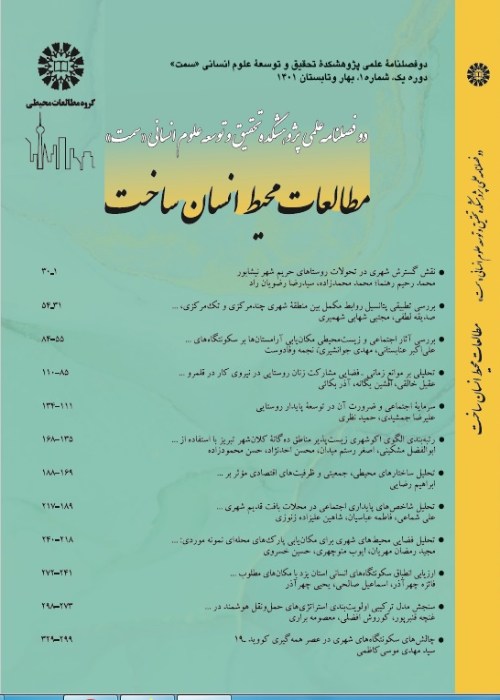An analysis of time-space barriers of rural women's participation in the labor force in the area of time geography Case study: Varzeqan county
Along with rural development, women are always interested in participating in the labor force in non-agricultural activities and the service sector in society. This society consists of uninterrupted paths and networks drawn by people in space. The space-time path is the main charter of time geography and the obstacles and time-space constraints in the employment path of rural women in Varzeqan county is an issue that the present study has analyzed. The research is applied based on the purpose and descriptive-analytical in terms of nature and method. A total of 45 women were selected to participate in the survey and answer multiple-choice questions (Likert scale) and 25 of these participated in in-depth qualitative interviews. The interviews were purposeful and the sample size was selected through Convenient Sampling. In the qualitative part, the method of "guided introspection research" using MAXQDA 20 software was used. In the quantitative part, SEM using the PLS method with Smart PLS software was used., as the main themes in the space-time constraints of rural women's participation Were recognized in the workforce. "Vital space" in terms of leading rural women in the time-space charter to low-paying jobs; "The ideology of the man as breadwinner (gender stereotypes)" means the man as the main provider of the family's economic livelihood and the woman's dependence; "Time-space crisis conditions" in the sense that women are seen as a potential reserve labor force are the most important constraints on the participation of rural women in the labor force in thetime geography .
-
Identify the key drivers of local planning of rural settlements Case study: East Azerbaijan province
Mohammadreza Pourmohammadi *,
Journal of Geography and Planning, -
An analysis of research studies in the field of regional foresight: a Scientometric study
Mohammadreza Pourmohammadi, *, Maryam Seyednazari
Journal of Studies on Man-Made Environment,



